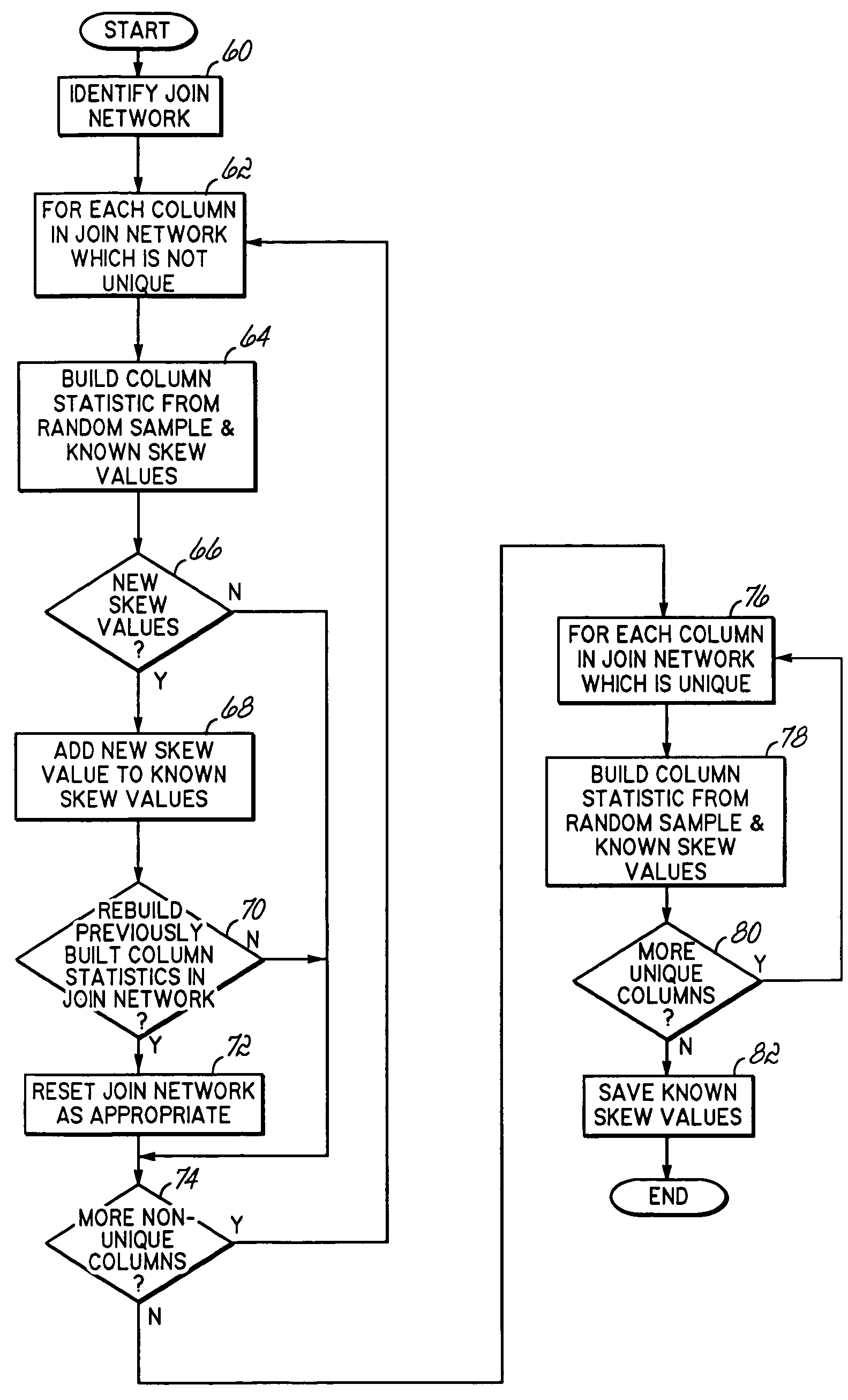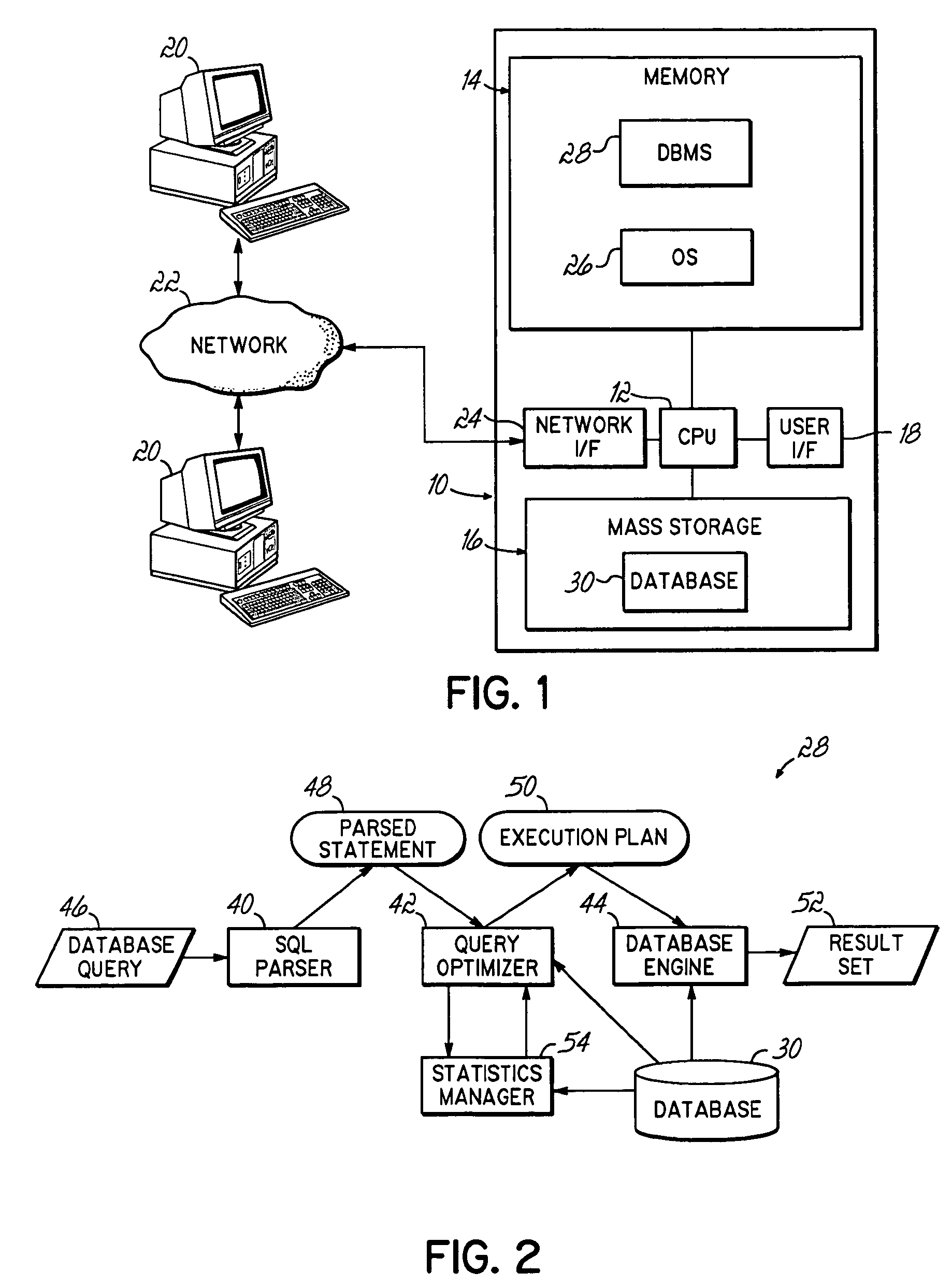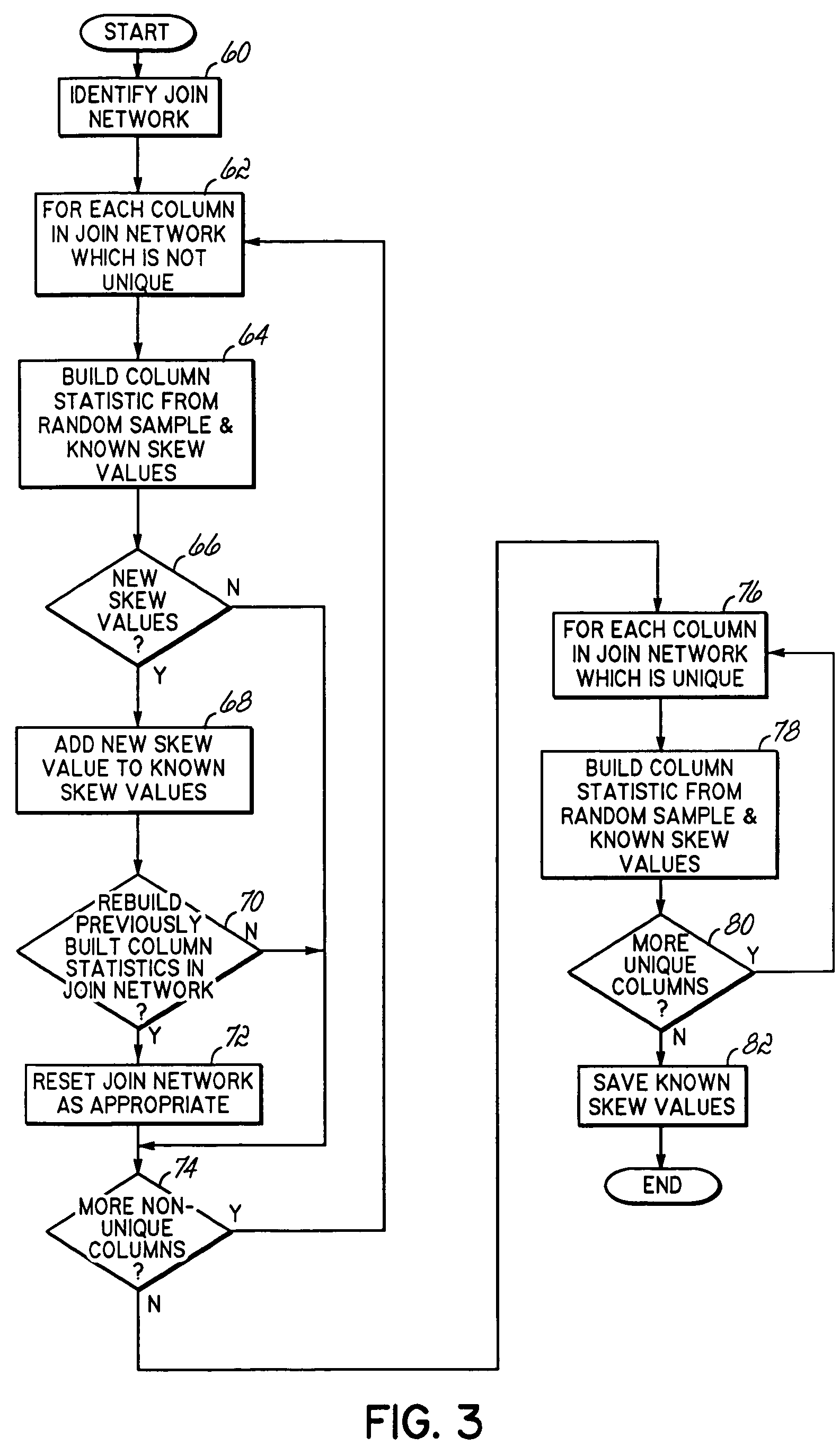Building database statistics across a join network using skew values
a join network and database technology, applied in the field of database management systems, can solve the problems of underestimating the fanout of joins, increasing the amount of computing resources required to manage such databases, and requiring enormous resources to handle the heavy workload placed on such systems, and achieve the effect of accurately reflecting skew values
- Summary
- Abstract
- Description
- Claims
- Application Information
AI Technical Summary
Benefits of technology
Problems solved by technology
Method used
Image
Examples
Embodiment Construction
[0019]The embodiments discussed hereinafter build column statistics using a least one skew value to more accurately reflect skew values across join networks. In the context of a query, all join predicates, i.e., expressions that join at least two columns according some criteria, that may be compared against each other directly or indirectly via transitive closure may be considered to form a set referred to herein as a join network. A join network may also represent less than all the join predicates in a given query consistent with the invention. Additionally, there may be more than one join network in a database query. For example, the following database query Q1 may be considered as containing two join networks, i.e., (x.f1, y.f1, z.f1) and (a.f2 and z.f2):[0020]Q1: select * from a, x, y, z[0021]where x.f1=y.f1 and y.f1=z.f1 and a.f2=z.f2
A join network may also be multi-column and embodiments consistent with the invention may take advantage of the invention with a multi-column stat...
PUM
 Login to View More
Login to View More Abstract
Description
Claims
Application Information
 Login to View More
Login to View More - R&D
- Intellectual Property
- Life Sciences
- Materials
- Tech Scout
- Unparalleled Data Quality
- Higher Quality Content
- 60% Fewer Hallucinations
Browse by: Latest US Patents, China's latest patents, Technical Efficacy Thesaurus, Application Domain, Technology Topic, Popular Technical Reports.
© 2025 PatSnap. All rights reserved.Legal|Privacy policy|Modern Slavery Act Transparency Statement|Sitemap|About US| Contact US: help@patsnap.com



